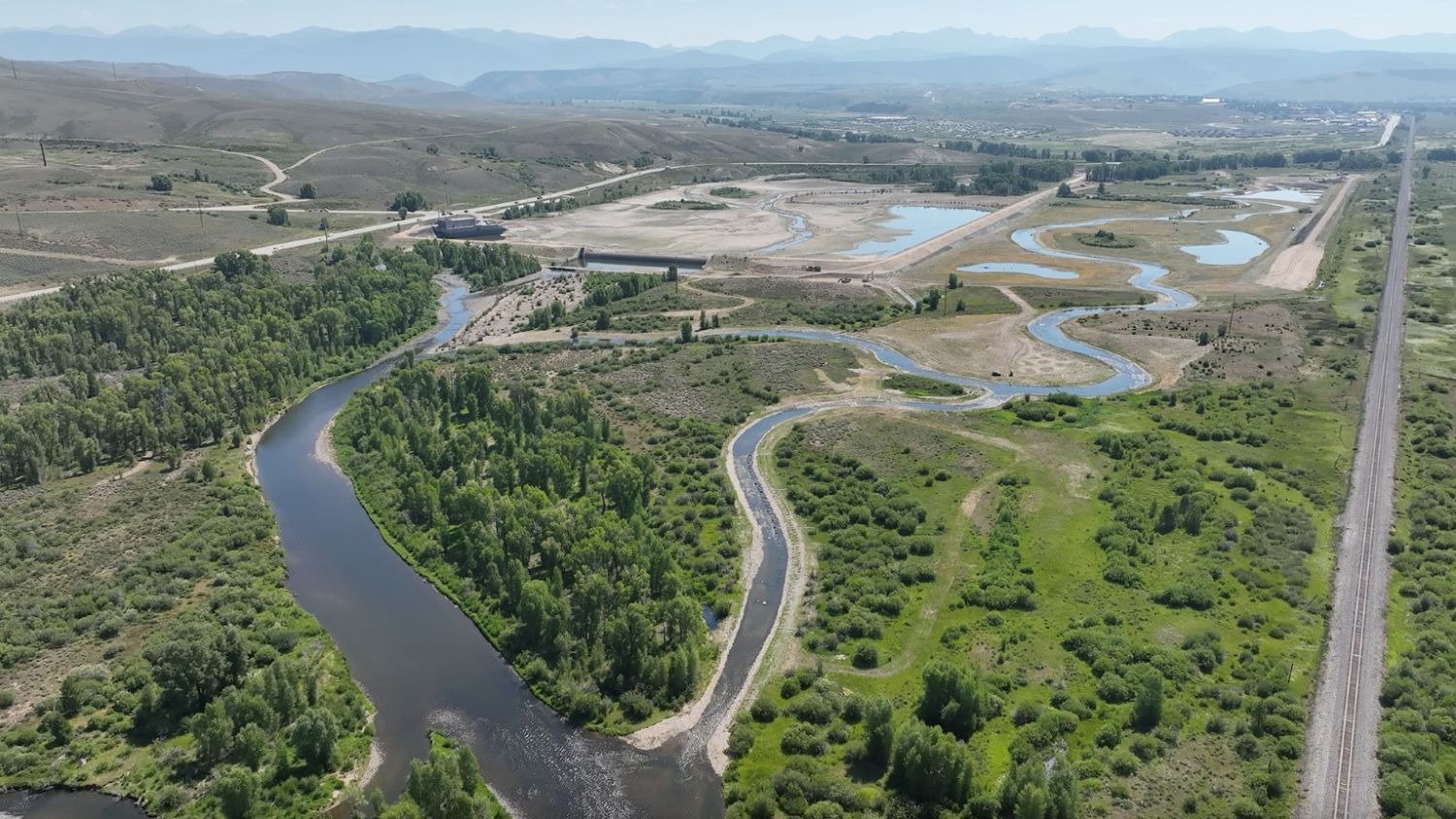GJ angler wins Superfly contest on his initial try
http://www.gjsentinel.com/sports/content/sports/stories/2007/09/12/091207_OUT_superfly_WWW.html
By DAVE BUCHANAN The Daily Sentinel
Wednesday, September 12, 2007
GUNNISON - For every fall but one since 1989, the Gunnison Angling Society has conducted its Superfly fundraiser. In all those years, except the first, of course, it's questionable if anyone entering the one-day fishing contest for the first time has won.
Matt Mayer of Grand Junction managed that feat last weekend when the Superfly novice garnered first place in a contest whose face has changed greatly from years past.
In prior years, the competition, a major fundraiser for the Gunnison Angling Society chapter of Trout Unlimited, was a one-fly contest with winning based on total number of inches of trout. You started with one fly and when that fly was no longer fishable (which mostly means hanging high in a tree or broken off by a fish) your fishing was done for the day.
In the past, whoever caught the most fish (equals usually most inches, right?) usually won.
This year, however, anglers were given free access to their fly box but were limited to recording only five trout, two in the morning and two in the afternoon, with one "wild card" trout at any time.
This put a premium on catching a big fish early, since you had to measure your first fish (kokanee salmon were not allowed) and being able to gamble later whether that 10-inch trout you caught with an hour left on the clock should be counted or released on the hopes of catching something bigger before time ran out.
Mayer, who runs a medical technology company in Grand Junction with his father, orthopedic surgeon David Mayer, made his life much easier when he hooked and netted a 19-inch rainbow on the East River with only a few minutes left in his morning beat.
"I caught it on a flashabou egg pattern, one they tie at Western Anglers, with a little beadhead," said Mayer, who finished the contest with a total of 77 inches for five trout. "I've used it before so I had some confidence in it. We (Mayer, teammate Steve Ward and their guide) moved into this hole with 15 to 20 minutes left in the morning and I caught that fish with 5 minutes left."
Unfortunately, no photos exist of the winning fish (although all fish were winning fish, since even a 10-inch fish might have been the clincher) because Mayer and Ward "were scrambling around so much to get Steve his last fish," Mayer said.
The two members of the Grand Valley Chapter of Trout Unlimited finished eighth as a team, and the other GVA team, comprised of Mac Cunningham and this woeful reporter, managed to clinch fifth.
Team fishing presents some interesting challenges. Mindy Sturm, a Realtor from Crested Butte, and Gene Hart, a long-time Gunnison River guide now living in Gunnison, paired up to take second in the team standings with 121 inches total and she said there was some strategy and gambling needed to finish high in the standings.
"I figured we needed at least a 15-inch fish (to win) and if I would have counted my 13-inch fish we would have lost by 2 inches," she said. "So I released the 13-incher hoping for a bigger fish. We didn't really know where anyone's score was, I just felt I needed a 15-inch fish."
But her gamble failed and she stuck on four fish, including one that went 15.5 inches, while Hart recorded five, the biggest a 151⁄4-inch rainbow (all fish were measured to the closest eighth-inch). The twosome finished 15 inches behind the eventual winners.
"But I really like the concept of working to catch a few big fish more than just hooking everything you can and getting it back in the water," Sturm said. "There was a lot of strategy, (including) knowing the water and the holes and how many fish were sitting in the holes and getting the larger fish out of there.
"We caught almost a dozen (fish) each we didn't count."
But what can an everyday angler take out of a fishing competition, whether it's the Superfly or the National Fly Fishing Championship slated for Colorado in October?
At first glance, it might seem competitive angling, even as low-key as the Gunnison Superfly, where emphasis in put on enjoying oneself, offers little for the average fly fisher, but that's like saying nothing comes out of NASCAR.
Just as many improvements in engines, safety and equipment have grown from the cars that go fast just so they can turn left, anglers can gain something by watching competitive anglers.
"There's a lesson in knowing the river and how to stay out of trouble with your fly because every river has so many spots where you can into trouble," offered Mayer, who won a Scott fly rod. "I'd say you have to have a fly you can fish with confidence, but also don't be afraid (to change flies) if one isn't working for you. I used so many different flies, I wouldn't have done nearly as well if it was still a one-fly contest."
 On Monday, August 30th come out to fish the Arkansas River with guides that care.
Cost for 2 people for a full day float is $375 or $315 for 1 person. Walk and wade for 2 people is $335 and $275 for 1 person. Half day rates available for both float and walk and wade.
On Monday, August 30th come out to fish the Arkansas River with guides that care.
Cost for 2 people for a full day float is $375 or $315 for 1 person. Walk and wade for 2 people is $335 and $275 for 1 person. Half day rates available for both float and walk and wade.









